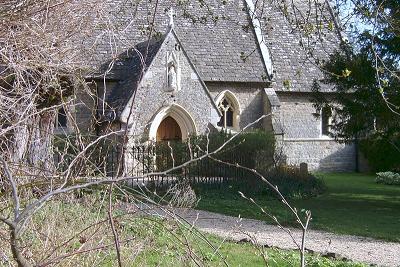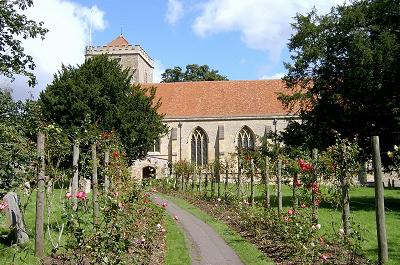Dorchester
Half a mile upstream on the Thame lays the village of Dorchester-on-Thames. If we are being truly accurate the village should be Dorchester-on-Thame. It is a pretty little place and steeped in history.
This area has been inhabited since the earliest times. On the opposite side of the Thames on the Sinodon hills once stood an early Iron Age fort, and more Ancient Britons are thought to be responsible for the Dyke Hills, a narrow strip of earthwork between the main river and the current village.
Dorchester’s position made it a very attractive proposition as a secure location. The Romans thought so too, and built a fort with a network of ditches for added security. They called the settlement Dorcic and built a road to the military camp of Alchester (near to Bicester). Archaeologists have found many Roman remains in the area, including an inscribed altar stone.
It is when we delve into the Ecclesiastical world of our ancestors that we find the most interesting things about the history of Dorchester.
 St. Birinus Church, Dorchester
St. Birinus Church, Dorchester
The relationships between the early Britons and Saxons were strained to say the least. Alliances constantly changed and they were forever plotting against each other. Pope Honorius I decided that the best way to sort out these warring factions would be to convert them all to Christianity. In 634 he sent one of his Bishops, a Frank by the name of Birinus to convert the Saxons of the Thames Valley to Christianity.
Birinus set about his task with great zeal and his fame spread. At this time the West Saxon King, Cyneglis, was trying to forge an alliance with Oswald King of Northumbria in order that the might get together and have a go at the Mercians. Oswald, however, was a devout Christian, and would not allow himself to be seen to be in partnership with a heathen. Seeing something of an opportunity here, Birinus wasted no time in persuading Cyneglis that his best career-move was to be baptized, and the ceremony took place in the waters of the Thame at Dorchester. As a token of his thanks Cyneglis gave Birinus the right to form the Diocese of Dorchester and he became the first Bishop of Dorchester. For a short time Dorchester even became the capital of Wessex but it was soon displaced by the much larger town of Winchester.
Birinus was very active and was reputed to have founded many churches in Oxfordshire, Berkshire and Buckinghamshire. When Cyneglis died, his successor King Cenwalh invited him to found a new church in Winchester.
Birinus was sainted, and his feast days are on December 4th in the Roman Catholic Church, and are commemorated on September 4th in the Church of England. The small Catholic Church dedicated to St Birinus is near to the present road bridge over the River Thame.
Things stayed pretty much as they were until 1085, when the Diocese was transferred to the control of the Diocese of Lincoln. It seems rather a long way to transfer control, but as I have seen before on this journey, people did seem to travel an awfully long way in those early days with only simple means of transport. What they would have got up to if they had developed the internal combustion engine would be anybody’s guess.
 Dorchester Abbey
Dorchester Abbey
Alexander, the Bishop of Lincoln, founded Dorchester Abbey in 1140 for the Augustinian Monks. It was richly endowed from the surrounding Parishes and had an income of £220 (a not-so-small fortune in those days) at the time that it was dissolved by Henry VIII in 1536.
The inside of the Abbey is filled with ornate carvings, monuments and magnificent stained glass windows. The most celebrated of these is the famous “Jesse Tree” window, a pictorial reference to the lineage of Jesus as foretold by the prophet Isaiah.
< Previous Page | Next Page >